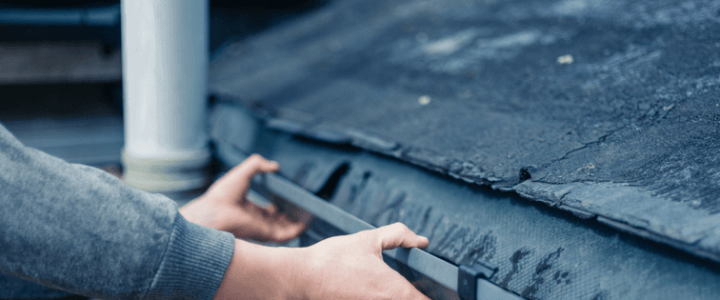Spring is here and hail is on the other side of the mountain. We need rain on our dry plateaus and anyone that has lived on the front range of Colorado knows hail is soon to follow. Hailstorms and high winds are frequent on the front range. Denver, Centennial, Aurora, Parker, Monument and residents of the entire range are accustomed to severe weather. Colorado roofers replace many roofs due to hailstorms. As soon as the rains begin even old damage from previous storms become apparent. This post is primarily for new residents to the Springs.
In the near future as a local homeowner you will experience a hailstorm. Depending on the amount, size and strength of the hail, your automobiles, house, plants and roof can receive considerable hail damage. We want you to be prepared for the future. The following information will describe how to inspect your property and shingles to assist in determining the extent of property and roof damage after a hailstorm.
A good place to begin your search is to walk around the perimeter of your home. We suggest looking for damage to window screens. Screen material can tear and puncture from hail stones. The vinyl window beading can easily puncture from the impact of ice projectiles. A wood fence shows hail impact marks quite well. It is common to find damage on HVAC condenser fins. You will not have any issues discerning the damage if you do a visual inspection of these areas. Whether the ground search reveals hail or not, we would recommend a visual inspection of your roof.
If possible, we would recommend viewing the roof from the ground with a good pair of binoculars. You would be looking for areas that reveal the black asphalt. An asphalt shingle is covered with granules. One of the visual signs of hail damage is the removal of granules due to hail impacts. This visual inspection could reveal small divots, like on a golf green. Another way to describe it would be looking for tiny craters similar to what you might see on a telescope while looking at the moon. A key area to focus on are the ridge and hip cap shingles. The crown or rounded radius is susceptible to hail impacts. While looking you may see holes in these areas. A temporary repair would be needed at this time. We would suggest calling Integrity Roofing and Painting at this time to inspect your roof.
If you are adventurous and willing to climb on the roof be sure that your ladder is firmly planted and secured. The ladder should extend a couple feet past the roof eave and anchor the feet of the ladder. If someone is available please have them hold the ladder while you dismount onto the roof and exit the roof. Integrity Roofing and Painting suggest having your roof inspected every year for any changes since the previous inspection and to detect potential issues before they become serious.
Call a qualified roof inspector at Integrity Roofing and Painting to inspect your roof is you suspect damage. Roofing in Colorado Springs becomes an educational process for many new roofers to the area. It doesn’t take long before they learn about hail damage and how to spot it. There are Colorado Springs Roofing individuals whom take it upon themselves to take it a step further and become further trained on hail and wind inspections. Our recommendation is to find a trained hail inspector.
The size of the hail will affect the amount of damage. If you witnessed the hail stones than it will give you an idea of what kind of roof damage to expect. If the hail was the size of a penny it is possible that an older roof may have incurred damage. It is doubtful that your roof will begin leaking from this storm. When hail is between 1″ – 2″ damage becomes apparent even to the untrained eye. A good place to look will be the metal caps on your roof. Hail will dent these caps and is a good indicator that the shingles have been adversely affected. An egg sized hail stone should cause bruising on your shingles. An indention or impression often results from the impact of these stones. Asphalt is exposed as the granules are broken loose from the shingles. While inspecting the roof you should find black marks, exposed asphalt over the roofs surface.
Stones that are the size of a golf ball and larger will typically cause damage. Contact a Roofer in Colorado Springs to schedule an assessment. Depending upon your relationship with a contractor of Colorado Springs Roofing you might consider allowing your roofer to inspect the roof before filing a claim. If you know you have damage and it is visible from the ground than file the claim.
The key places to look for hail damage on asphalt roof are soft metal, ridges, valleys and the field of shingles. The soft metal caps will dent easily to reveal hail impacts. The ridge caps may be thinner and may wear quicker than the field shingles, therefore easier to see hail damage. Roof valleys are a good spot to identify hail impacts due to a potential radius affect when laying shingles in valleys. Often times you will find a slight void between the shingles and decking in the valley areas. It is area for hail to damage a shingle when full contact with the decking isn’t maintained.
Three types of hail damage to inspect for are missing granules, bruising and irregular shaped cuts or punctures. While at the edge of the roof inspect your gutters for deposits of current roof granules. This indicates the possibility of roof damage. While looking at the shingles if you find black pock marks that are dark black as opposed to grey this indicates fresh hail. The suns ultraviolet rays will turn the asphalt grey over time.
Use your hands to run over the surface of the shingles and feel for dents and impressions. Your feeling for the same things that you might see in different types of fruit that are bruised at the grocery store. If you feel impressions or indentations on the surface these are indications of damage. Although the granules might be present at this time and appear to have resulted in no damage you may consider calling a Colorado Springs Roofer for his evaluation.
Unusual indentations, cuts or slight punctures that reveal newly exposed asphalt indicate hail damage. Hail stones can be round, oval, square and many unusual shapes. Many new inspectors make the mistake of assuming consistency in a hail pattern. We have seen hail stones that look like flying saucers, spears, baseballs, fish and animals. The varied characteristics and shapes of stones result in damage that can be confused with wear and tear.
A roof that is improperly assessed from an inexperienced inspector can result in significant financial loss to the homeowner. Experienced insurance adjusters that have a set protocol from the insurance company have their hands tied. There are some insurance companies that consistently deny hail damage on roofs when another company would agree to the hail damage. We suggest having a qualified inspector present during the inspection by the representative of the insurance company.
Contact a qualified expert in Colorado Springs Roofing.

